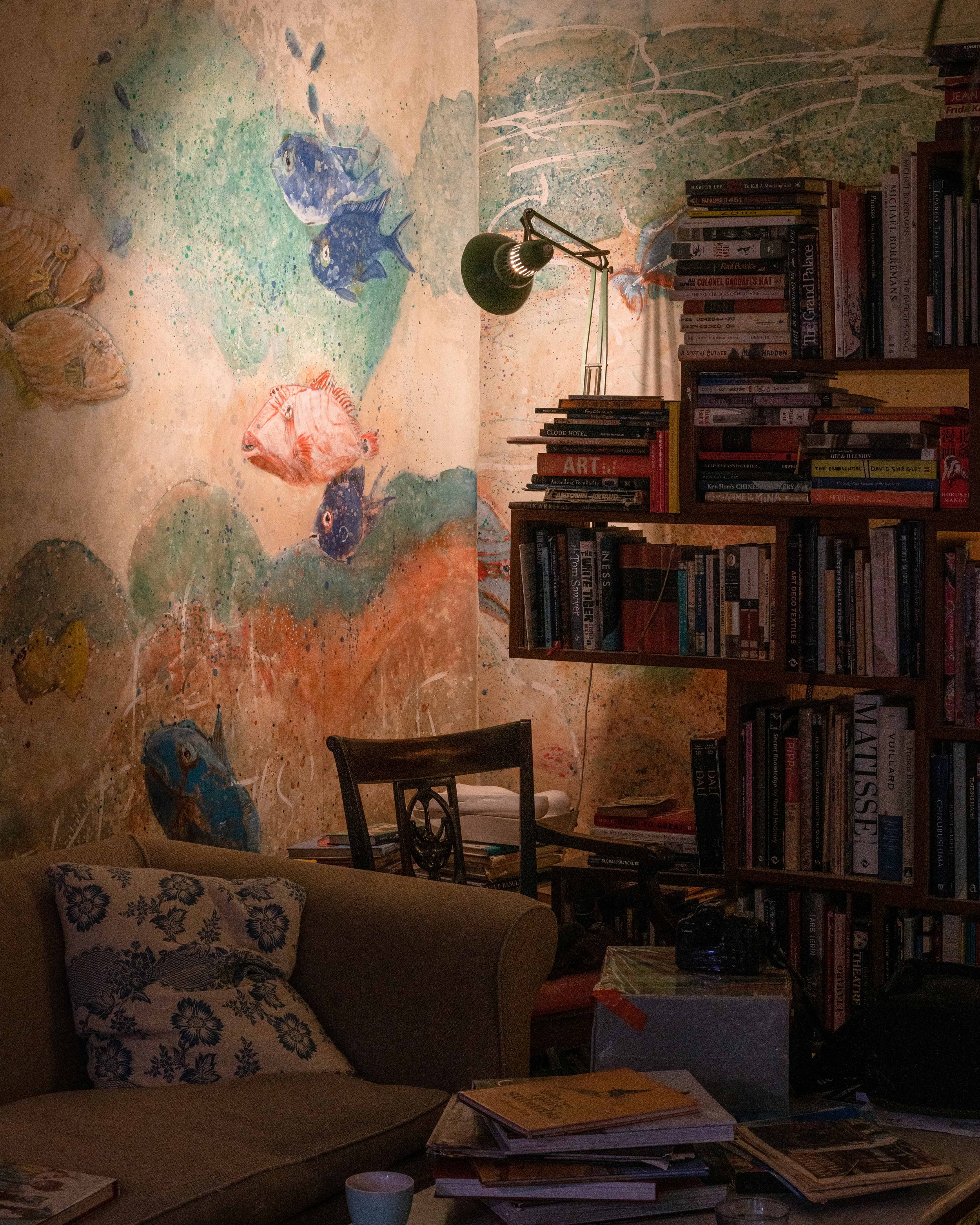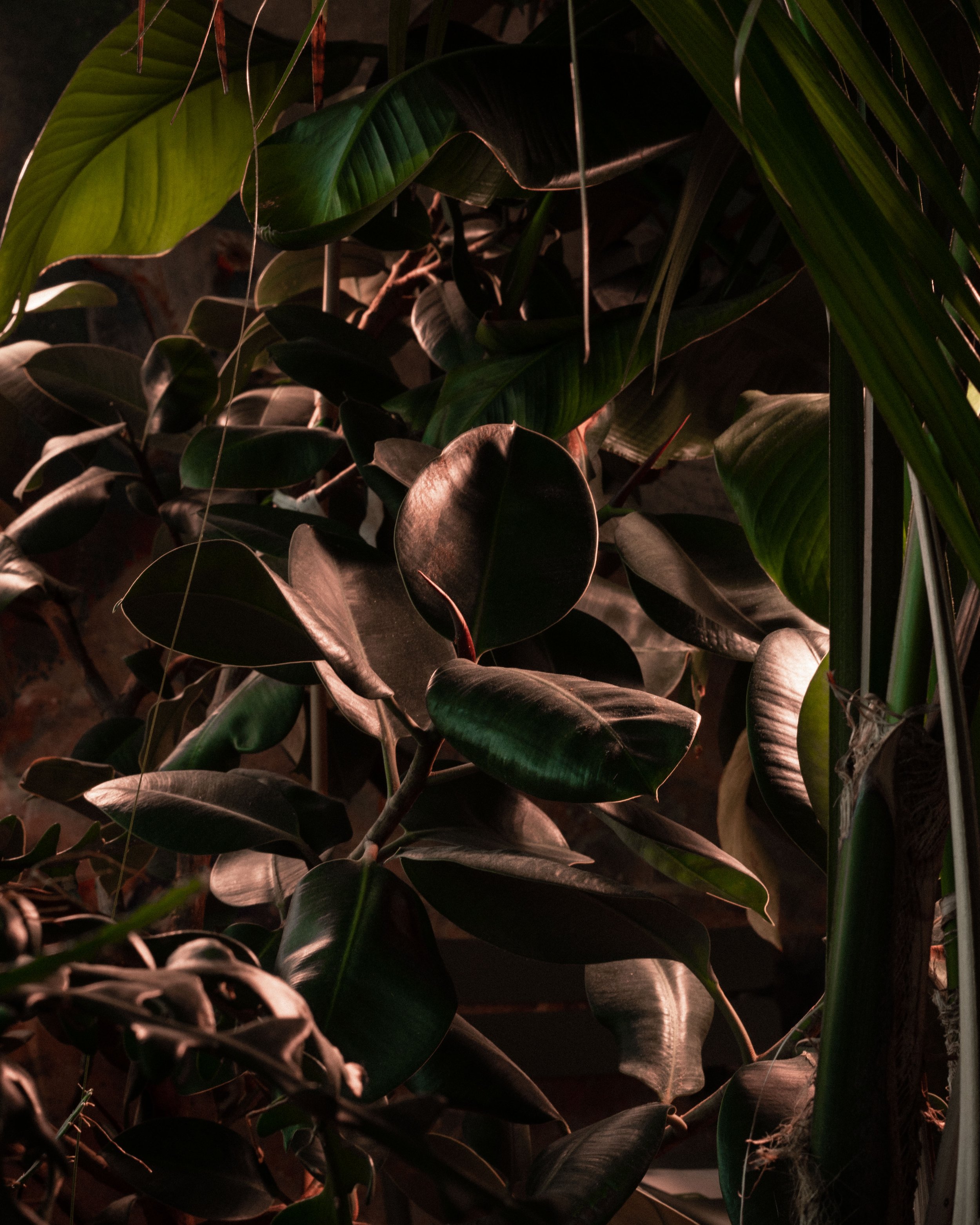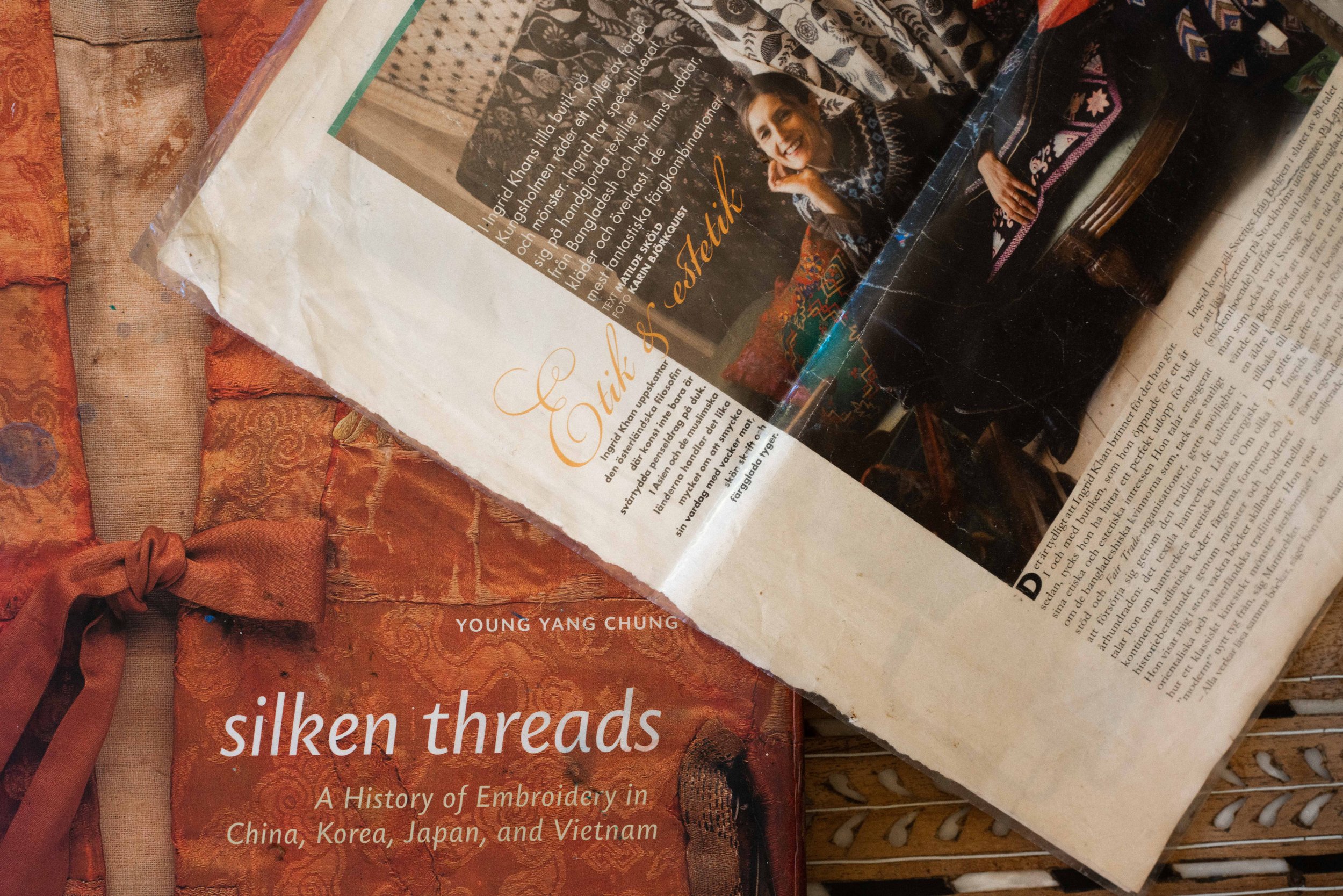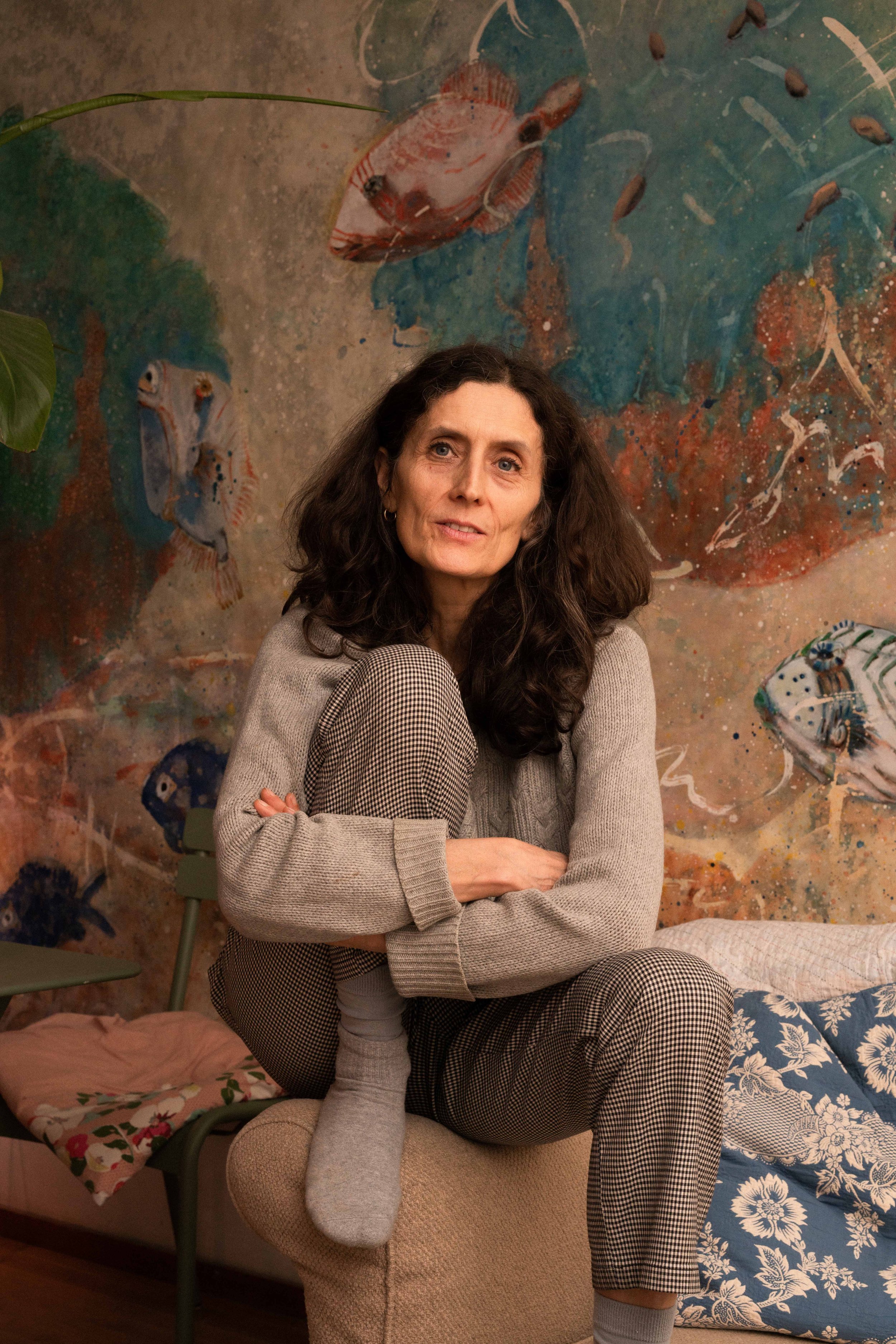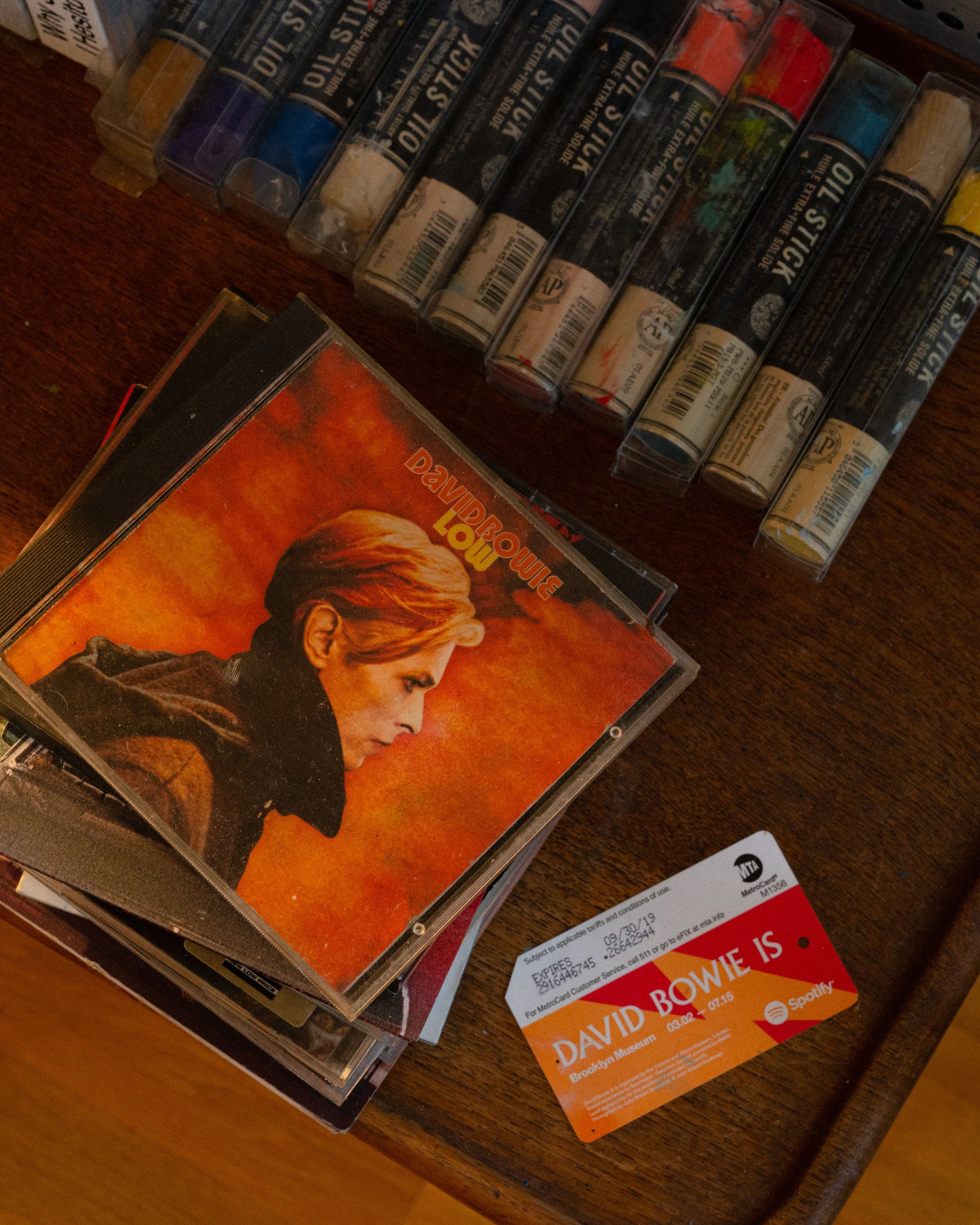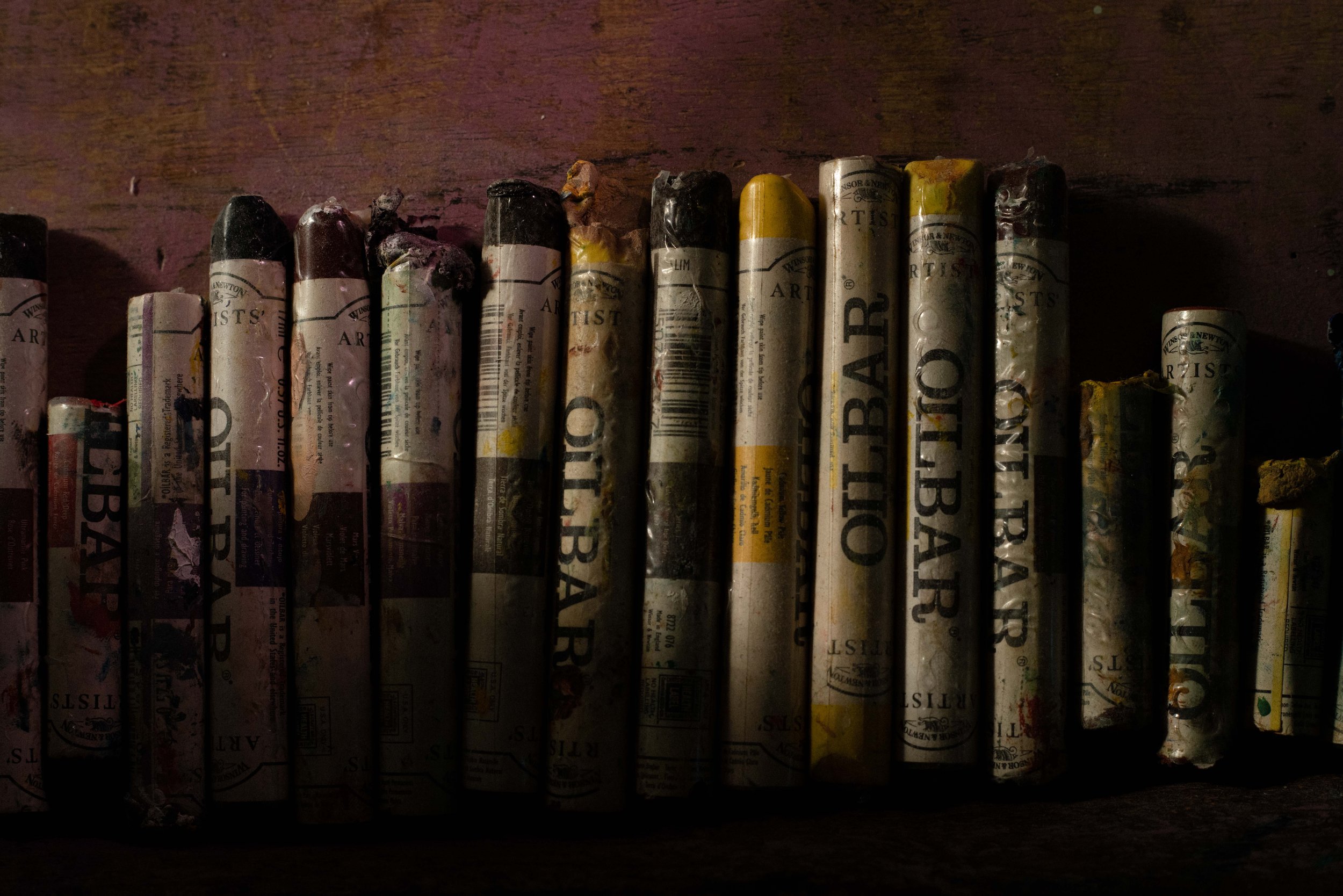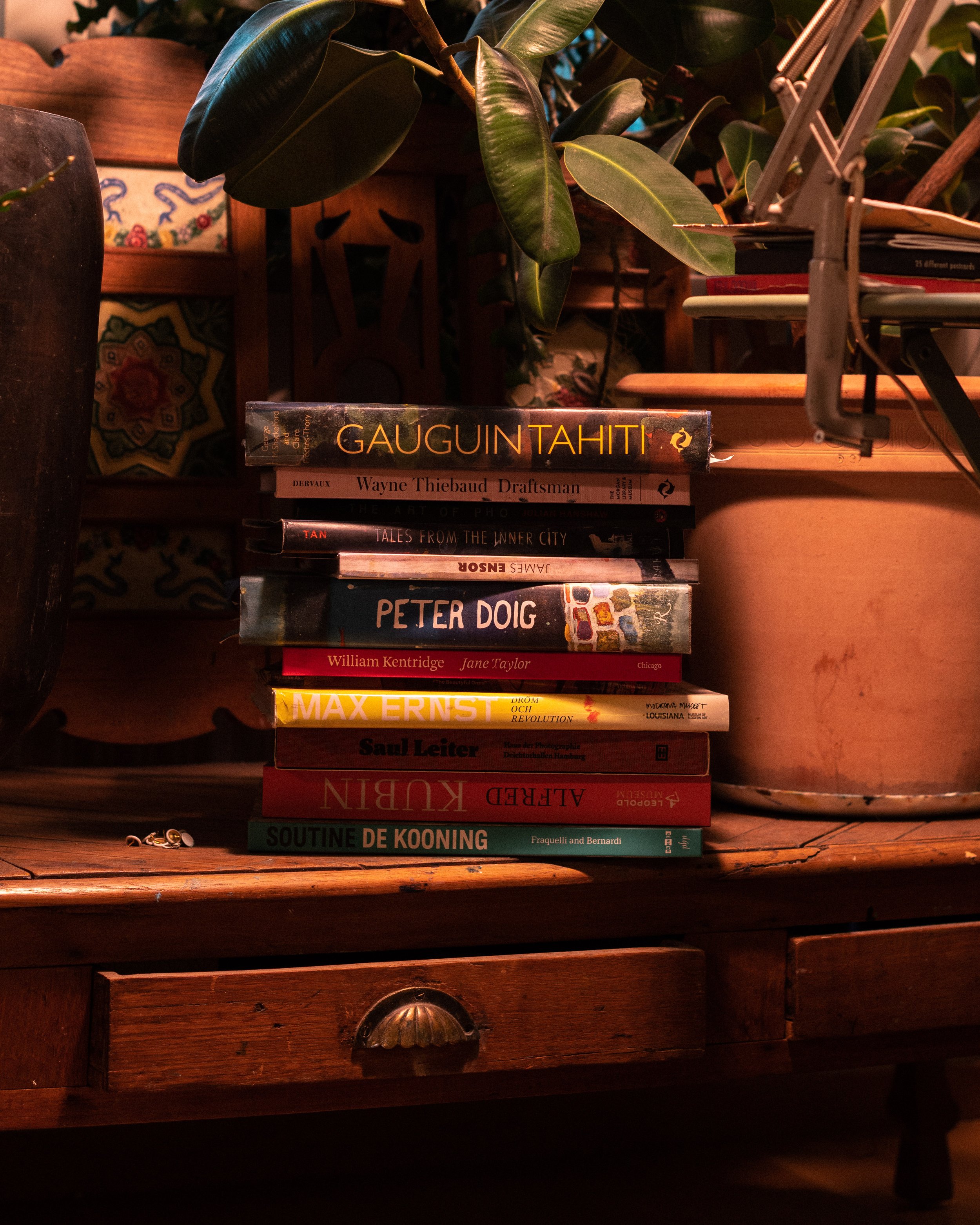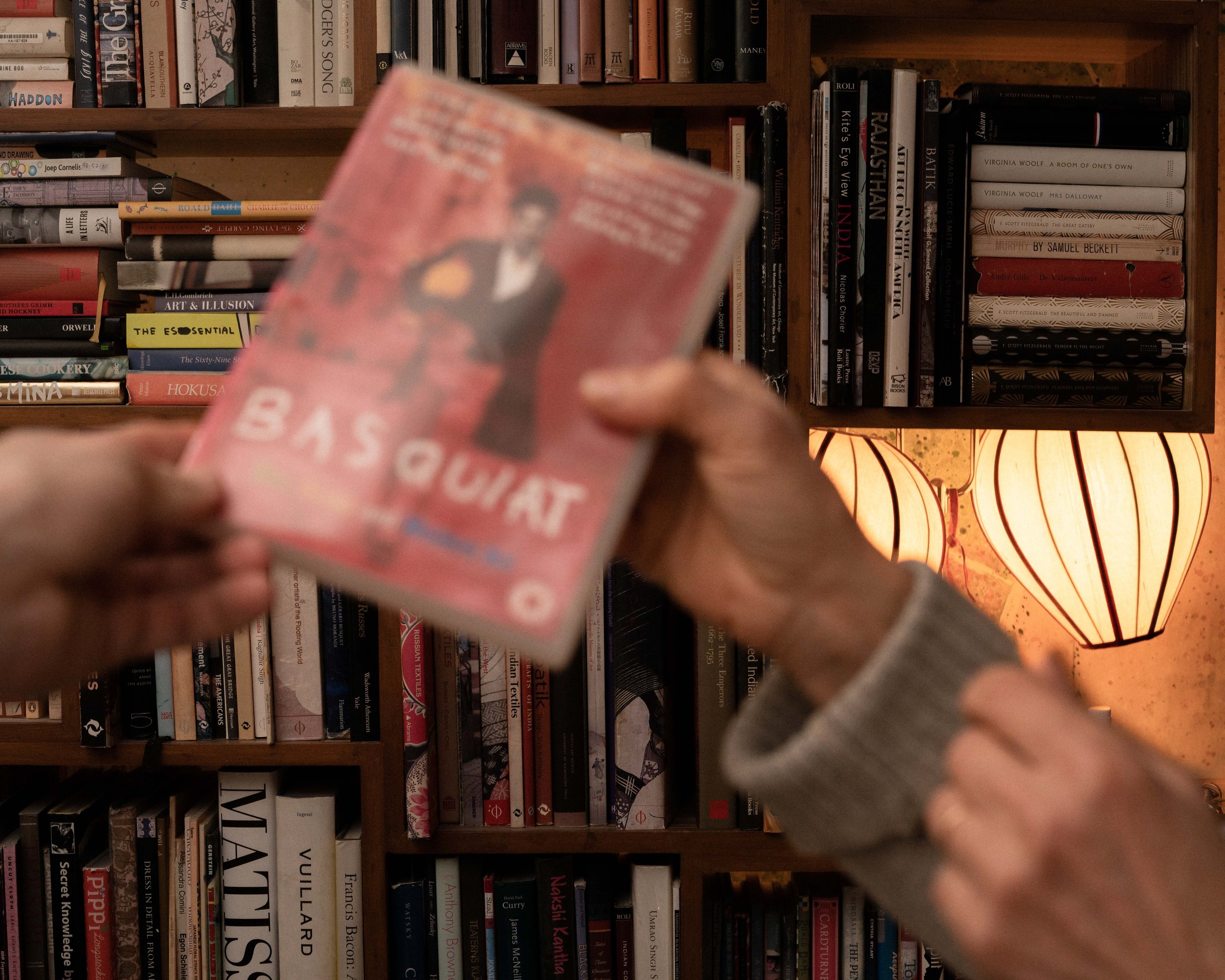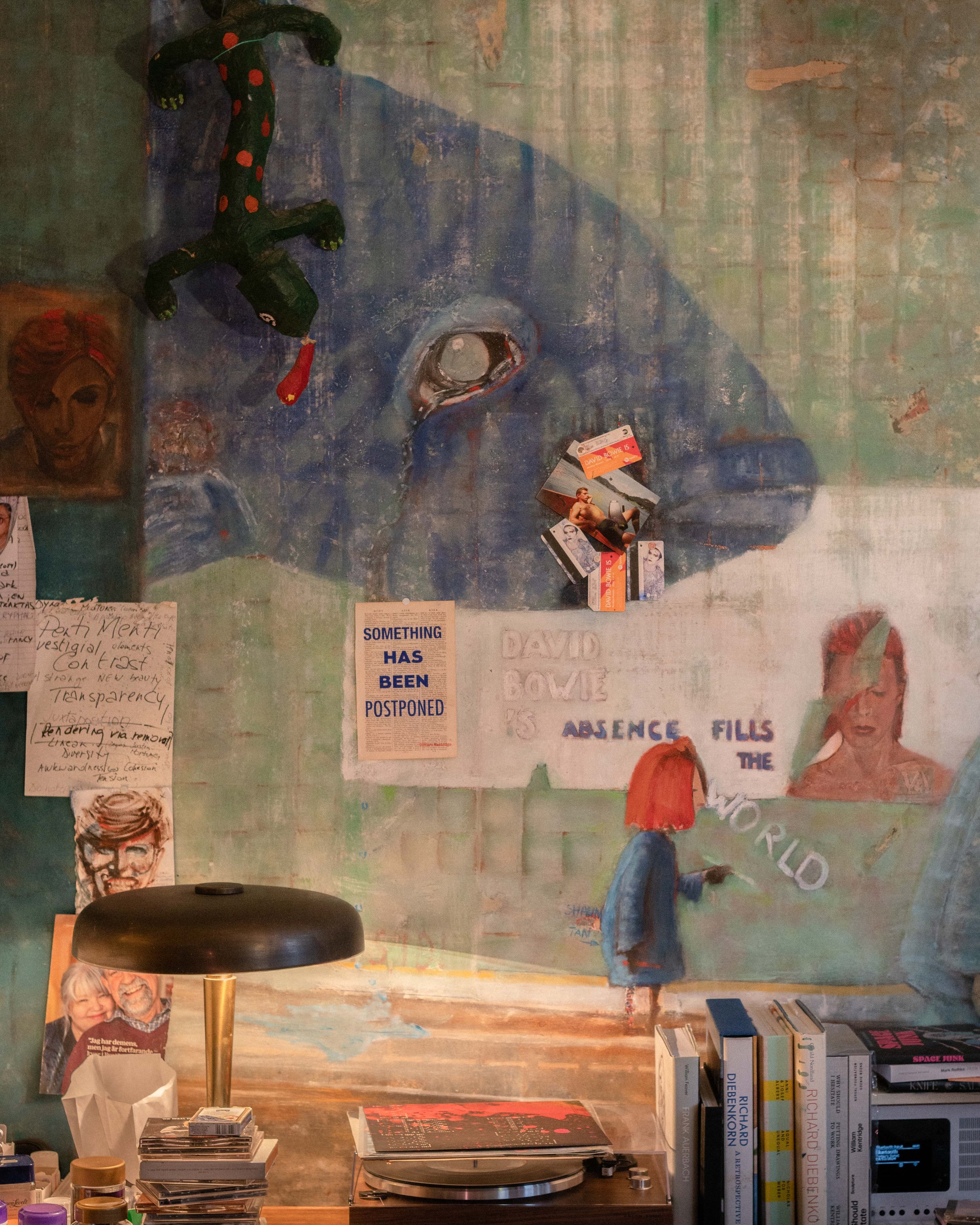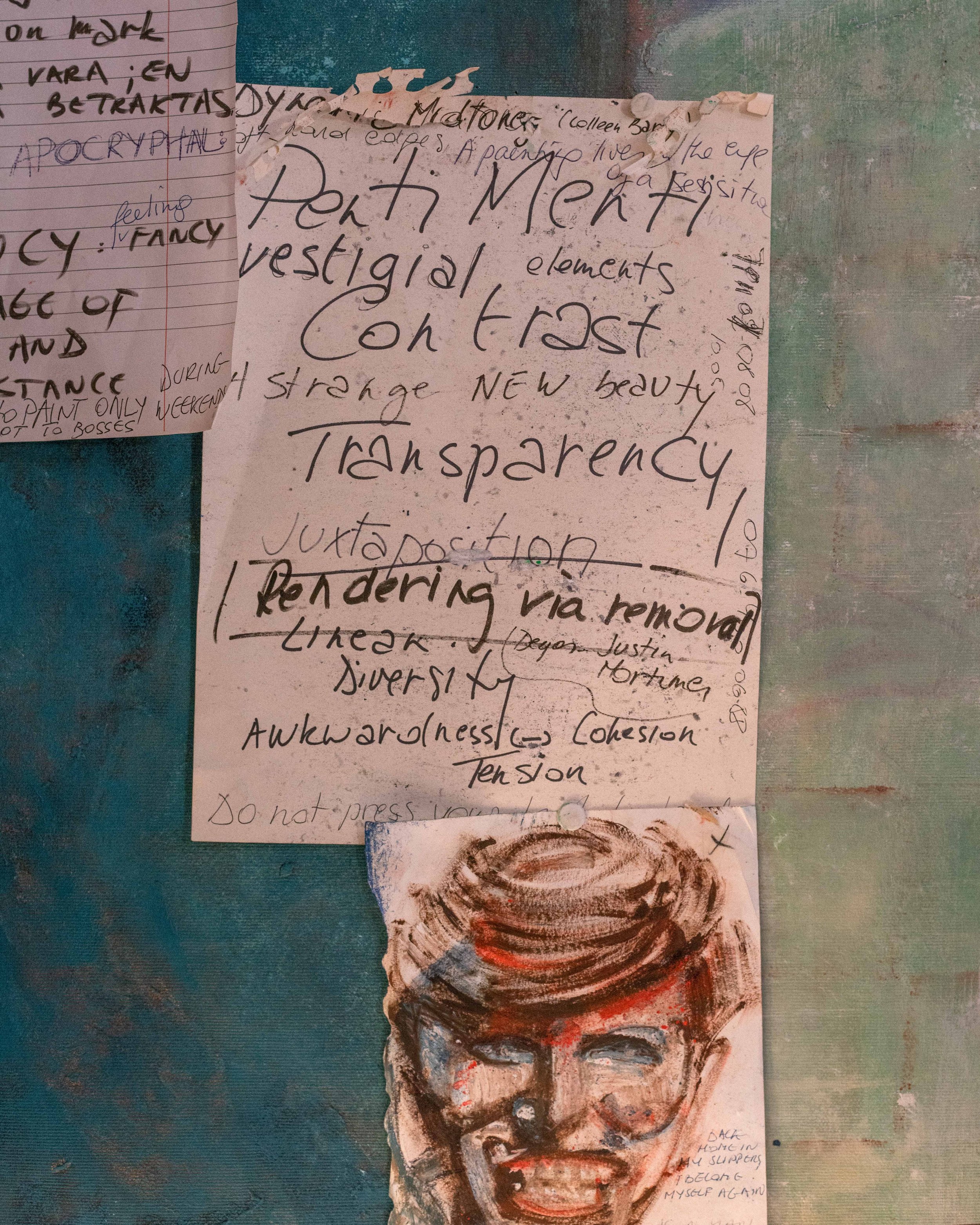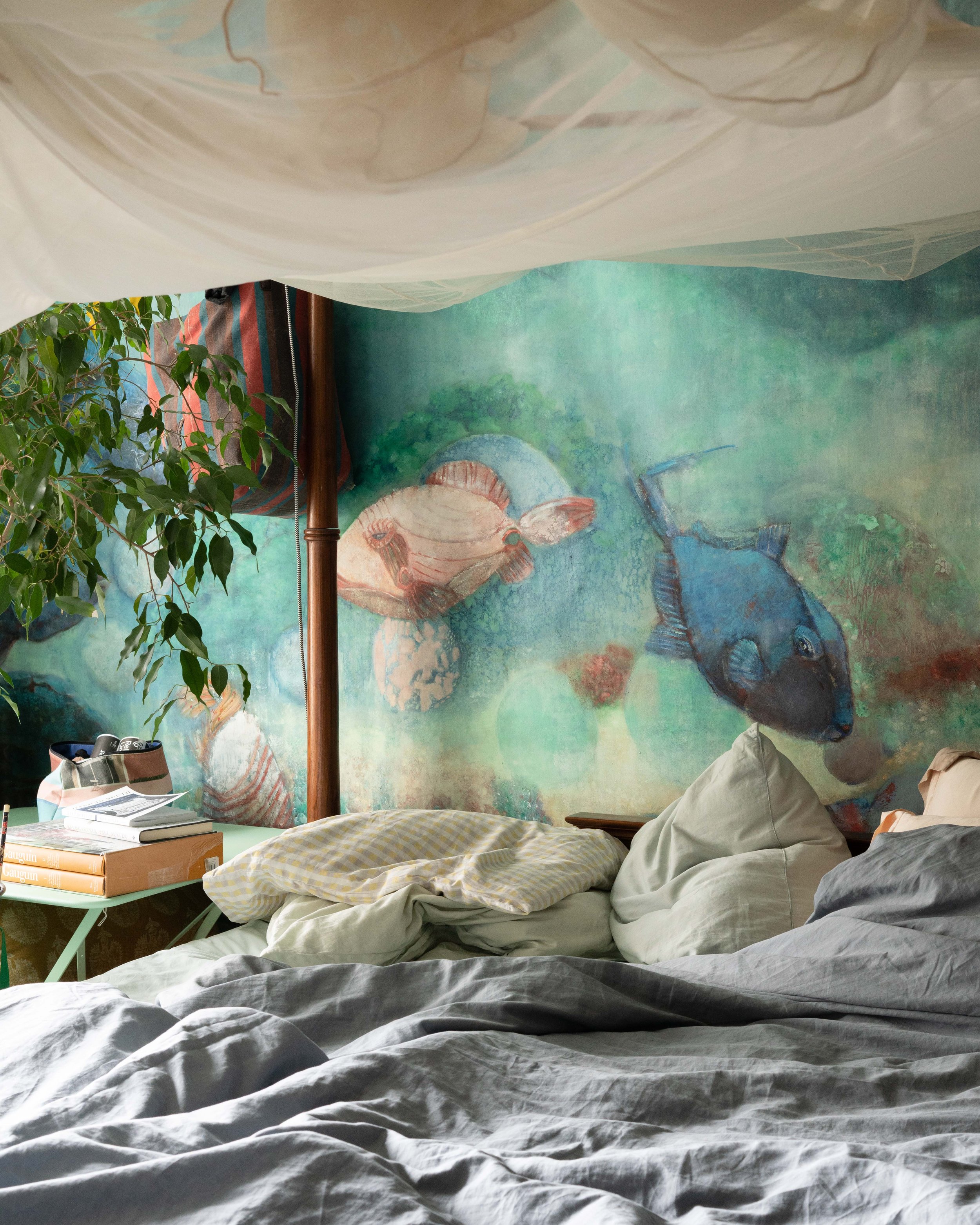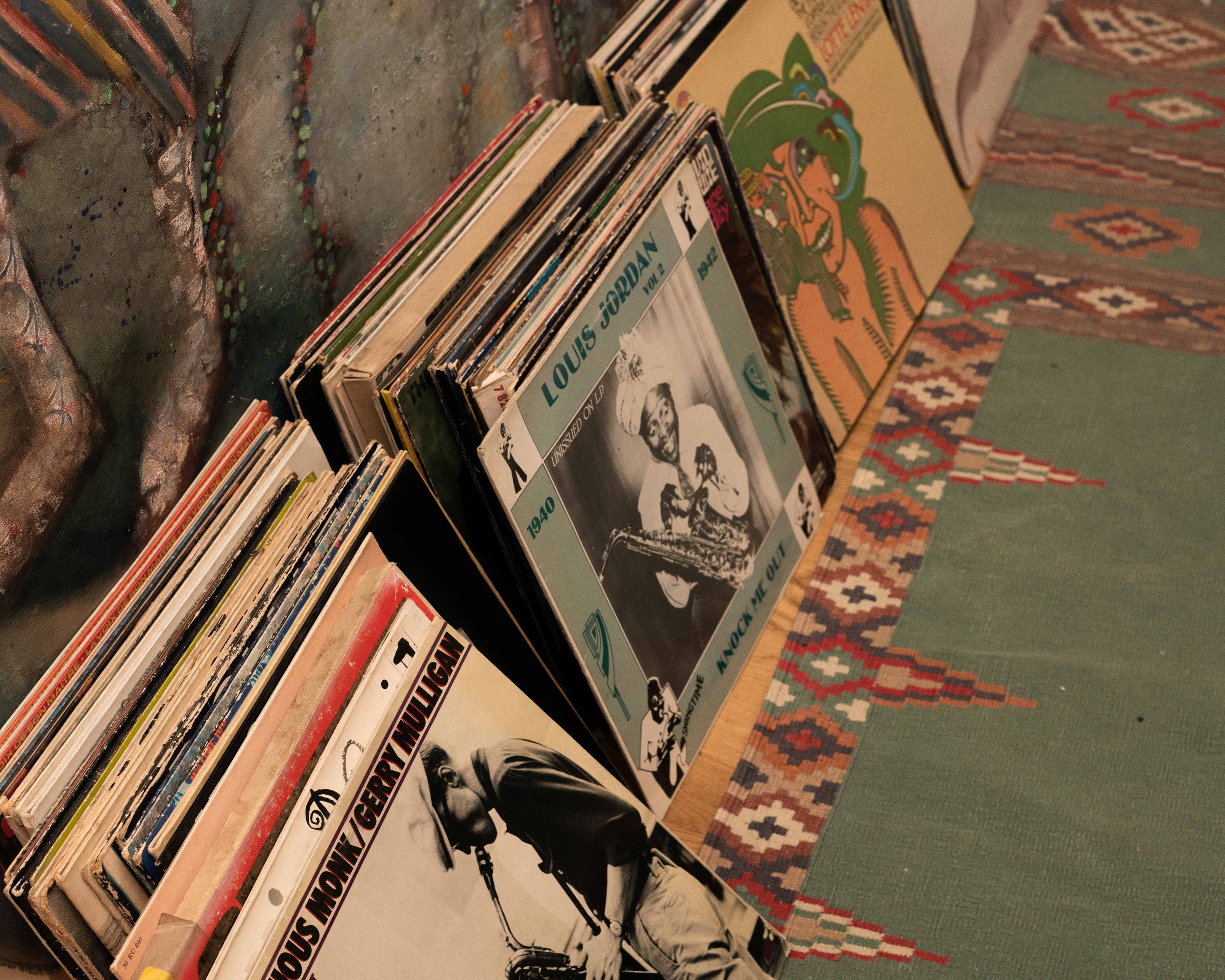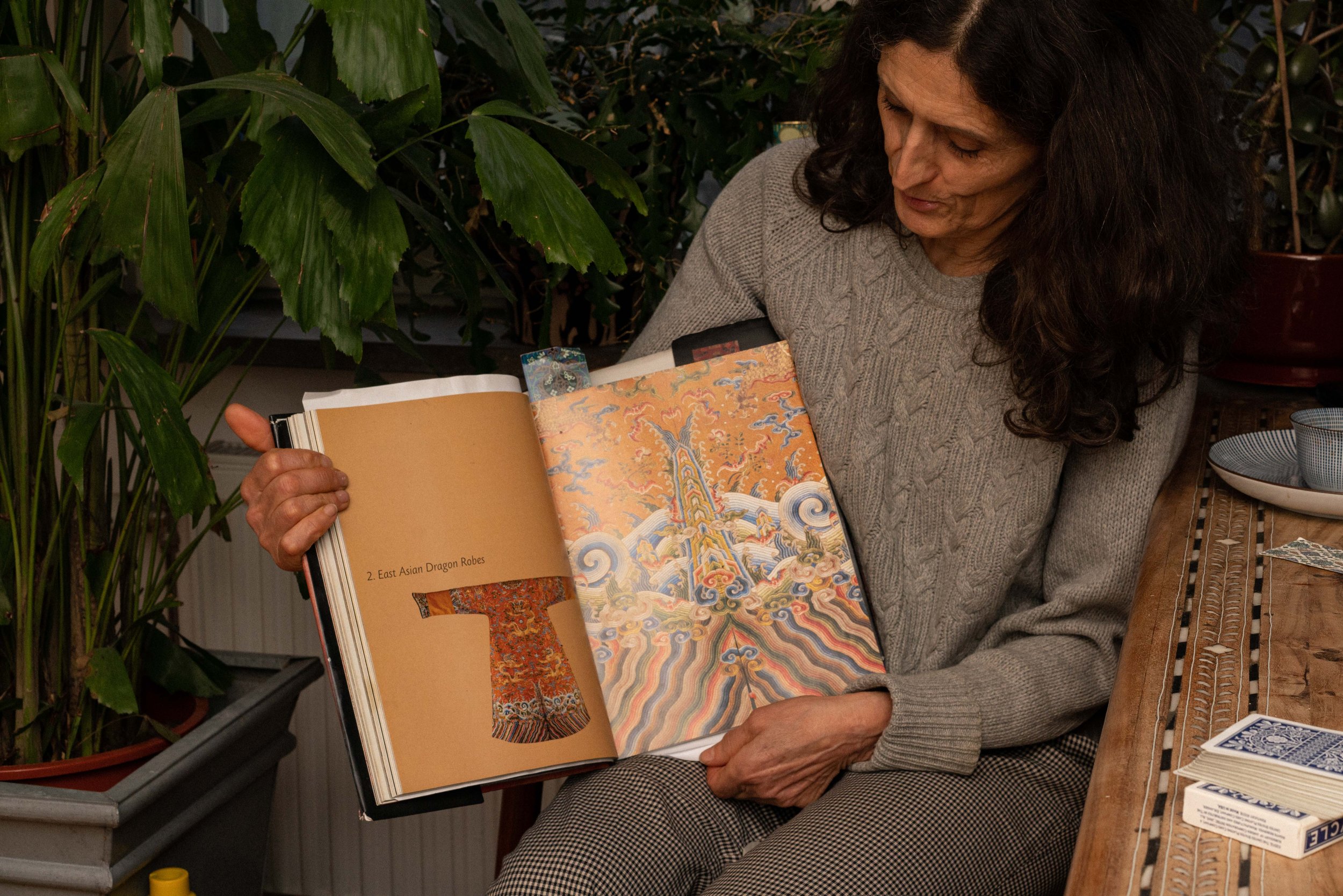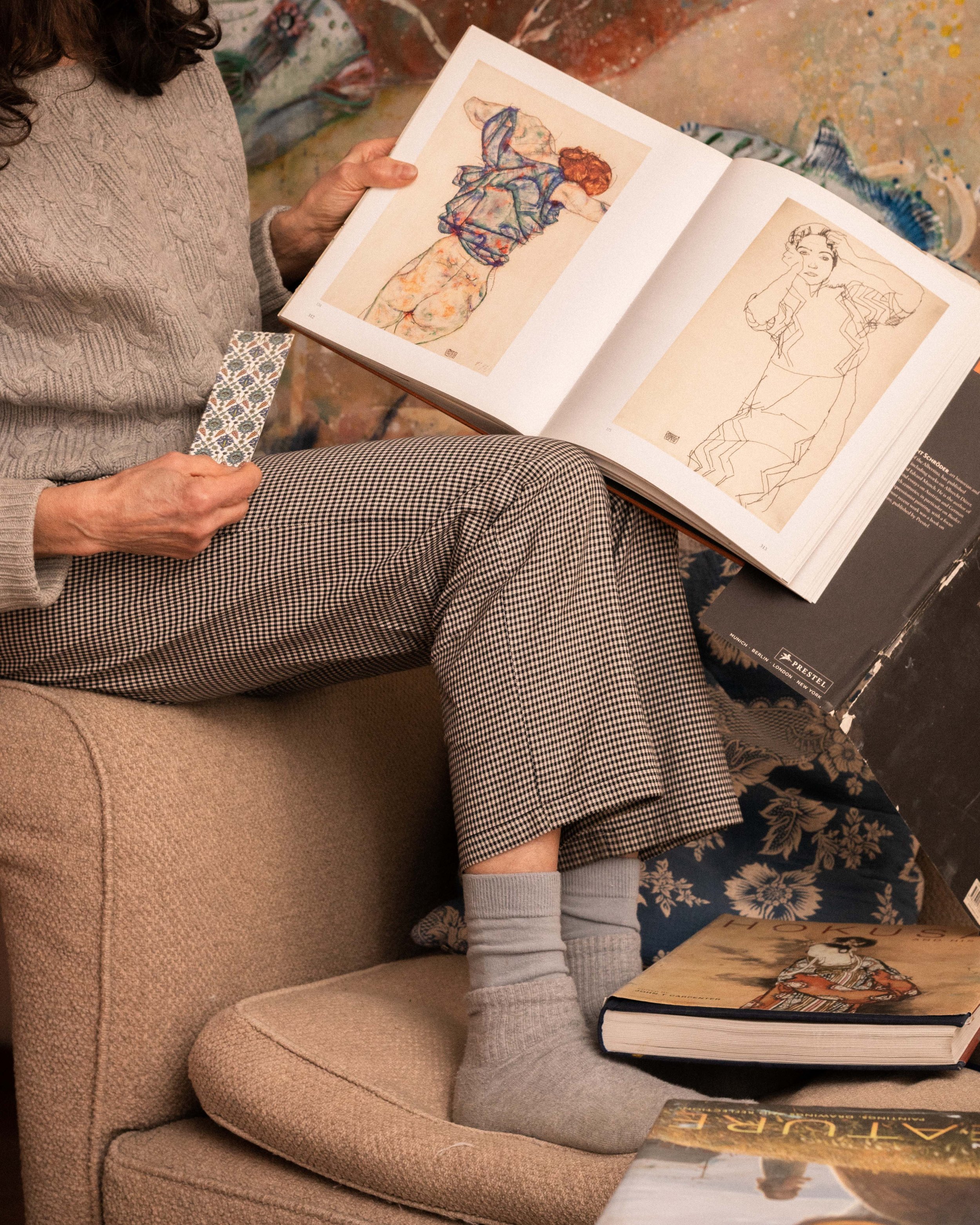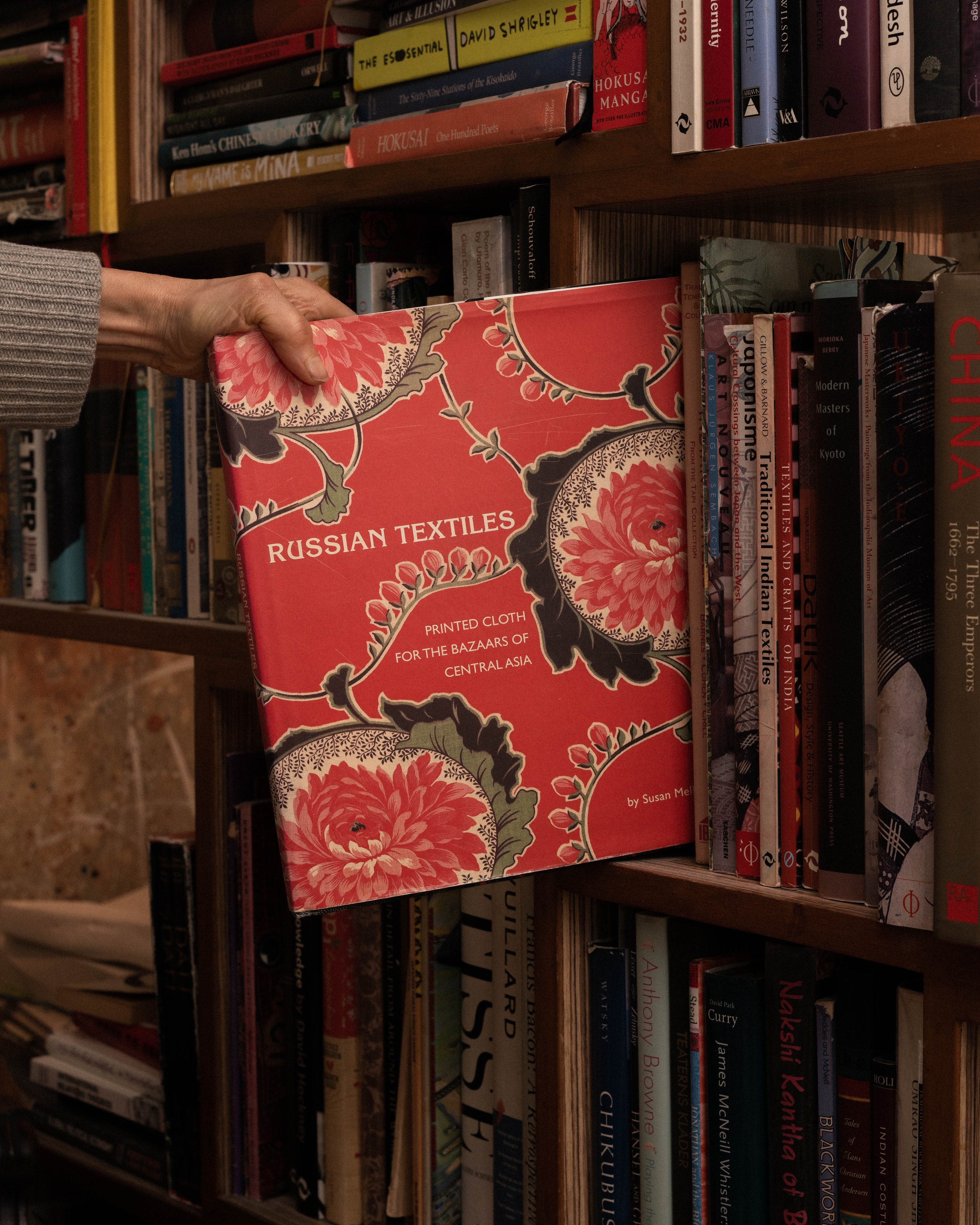Living in a Fictional World
Locations: Råcksta, Stockholm
Country: Sweden
Through a convoluted chain of Instagram screenshots sent to me by my teenage cousin on a weekday, I discovered Julian’s request for a photographer to document his mother’s paintings and make photocopies of them.
Following some back-and-forth background info about each other's motives, we decided to meet at Volca Coffee Roasters in Stockholm to discuss further – He, a fresh Political Science graduate with plans for Belgium, possessed a disarming smile and a genuine desire to help his mother create prints of her paintings. Our mutual interest led us to collaborate. Though the job seemed straightforward, I had no prior experience making photocopies of paintings. Julian, however, trusted in me, and I was not here to disappoint. The day before the shoot, I approached the task with perhaps a casualness, treating it like a routine job despite its unforeseen, unique nature.
I arrived at Julian ́s home at ten on the shoot day. Only Julian would be home alongside the paintings. Paintings I thought would be hanging on white walls. I knew from taking my first steps into the apartment that I needed to pick his mother’s brain. These are not your average paintings, nothing sort of an ordinary home. The paintings, like tapestries, cover all the walls in the apartment. Some paintings covered three out of four walls within a room by themselves, some measuring 7 meters. Seeing the walls. I only now understood why Julian wanted to help her make posters out of parts of the paintings. So that anyone who wants a more colorful home, regardless if one does not have a spare 7m wall, can support Ingrid.
The paintings, only decorations, covered the walls. The furniture, ornaments, books, vinyls. CDs, films, brushes, and more books were scattered arbitrarily. Told of a sentimental past, nonetheless of an eagerness to learn. These rooms are illustrations of another ́s imaginative faculty.
Julian and I managed to make these prints. On the first try, getting the colors correct. To my surprise, the prints even made Ingrid excited. Haven ́t yet met Ingrid Khan. I asked Julian if I could come back to learn about these works and more about Ingrid herself. Ingrid gladly agreed, according to Julian.
I returned a couple of weeks later, in December. Having not talked to Ingrid directly, only her son. I had no premeditated idea of who she was, how she would behave, or why she even painted from the beginning. I was, therefore, gladly flabbergasted by her unconventional yet heartwarming personality. Julian was quick to mention the importance of taking notes. At first, I didn’t comprehend the importance. Then it hit me: Ingrid needed no warming up. I didn’t even have to sit down before I was overwhelmed. Not in a bad way. Ingrid was full of energy, speaking rapidly about everything that came to her mind at the spot, drawing me in. I was astonished when I understood that it was no small talk either. As if she had contemplated it all beforehand and how she wanted and needed to see it from another's perspective. We quickly found each other in our mutual interest in Eastern philosophies.
Born in Belgium, with a university degree in general literary studies. I was astonished to learn that Ingrid was a self-taught painter. Further, dumbfounded when I asked why she had come to paint the massive paintings hanging all around us. To decorate the “cave” she called the apartment. Ingrid, with her husband, a Bangladeshi native, had met at Stockholm University when they were on an exchange. They have lived together in Sweden, Bangladesh, and India alongside their three children. Ingrid had furthermore operated and owned a textile store in Stockholm before moving abroad, where she sold colorful and warm textiles (Nokshi Kanta) mostly handmade in Bangladesh, India, and other eastern countries alike. She said that when they lived abroad, there was no need to paint. Everything was already decorated and colorful in masses. When Ingrid’s family moved from vibrant India to a cramped "shoebox" apartment in Råcksta, Sweden decorations were needed, hence the paintings. Some paintings aimed for her children’s rooms (now grown up) shine with a childish almost naive nature, and others deep and dark all sprung from her imagination. Ingrid Khan learned to work wonders with limited resources. The plain concrete doors were transformed with Indian fabrics, the cold plastic floors were warmed with books and vinyl records, and the walls became canvases for sprawling works of art, some stretching up to seven meters long.
Any tool or thing can be used to paint, citing Saul Leiter that there is no single way of painting. Ingrid is however quick to inform me of the importance of great colors or materials to paint on to achieve the best result;
“Buy the best color your own money can buy”.
Nothing about her process is simple, but one principle stands out: it should never be precise. You don’t necessarily need an expensive brush to create art. What you must never compromise on, however, is color. Good paint has qualities that are difficult to reproduce or compensate with technique. Ingrid often paints with unconventional tools: broken implements, sandpaper, old brushes, scraps of packaging, and even her hands.
Seeing the books climbing from the floor up the walls. I figured Ingrid, as with the whole family, was an avid reader. She saw herself as an escapist and absurdist not taking stuff or herself too seriously, but trying to see beauty in the most mundane things. Ingrid also has the urge to find out how other people think, believe, and live. Thereby emerging herself fully in others' work. If she had to state some influential authors regarding her paintings, they would be Young Yang Chueng, especially her book “Silken Threads”: An Authoritative Guide to the Origins, history, aesthetics, and Cultural Context of East Asian embroidered textiles. As well as the work of the Australian-Chinese artist, filmmaker, and writer Shaun Tan, just to name a few. These authors were not just inspirations for their drawings or writings but loved for what worlds they could tell, create, and immerse the reader in. However, it would be impossible to state where all her ideas originate. Ingrid can state numerous different sources of inspiration for each painting. As with me, inspiration can come from any of our senses. One painting can include inspiration from several authors, books, films, music, artists, events, and even spectacles or cultures. An example of a source except for the mentioned writers would be, Philippe Petit, the French highwire artist, most notably known for walking between the towers of the World Trade Centers in NYC. In the same painting influences from the Japanese folding screen illustrator and painter Ogata Korin (1658-1715) shine through intertwined with song texts from David Bowie.
“The brain is like a blender, not of food, but of images. You need to keep feeding into it and out comes a concoction that is particular for just you. Not everyone will understand the references but that’s okay.” Ingrid States.
Curiosity is a defining personality trait, as love for not only her family but also creators like David Bowie and Shaun Tan and birds in general. Ingrid ́s love and care for others is expressed in many ways, yet most noticeable is the “Weeping Wall” in the kitchen. This wall of remembrance is an ever-changing work of art. A wall covered in a background painting with notes, pictures of family members, quotes, and other noticeably crafted details added to it. The wall is a constant reminder of the deceased, a recollection of their best days, and why they always will be loved.
Ingrid ́s continuous nature to alter, add, or remove is constant. Her changing nature reminds me of the Japanese word and aesthetic, wabi-sabi (侘び寂び) which is centered on the acceptance of transience and imperfection. A painting is never finished, in her eyes, they change with the times. It may seem a bit odd, yet Ingrid does not mind doing things differently. Adding, “I see myself as a group of one.” Knowing with shy pride, she behaves or thinks differently; she constantly reminds others to act the opposite of what she thinks when they ask for advice on different topics.
There is much I can acquire from our conversation. Ingrid's childish joy for everyday things is contagious. As with her love for learning. There may be hundreds of reasons why she started or continued to paint. I will anyhow always remember when I asked her why she wanted to decorate the whole apartment and she stated:
“It is now a lot more fun to brush my teeth”
Words: Philip Käll
Photos: Philip Käll
